While their dried counterparts are a workable stand-in, fresh rice noodles are unbeatable for achieving the chewy texture we know and love in restaurant-made noodle stir fries like pat see ew (pat thai is another beast). They are also indispensable in street food style noodle soups like yentafo that call for flat, wide (sen yai) rice noodles.
Londoners need look no further than Lo's Noodle Factory in Chinatown to acquire fresh sen yai noodles, which are called ho fun in Chinese. Enter the hallway via the street entrance, and if there isn't someone present then let yourself in past the boxes stacked along the wall. Pop your head around the corner into the noodle-making room and exchange a shiny £1 coin for a 600 gram bag of still-warm and freshly cut noodles.
Failing easy access to a source of store bought fresh rice noodles, however, you can easily make your own. The process can be a bit fiddly, and you may muck a few up to start, but once you get the hang of it you'll knock the sheets out easily.
I make my rice noodles using a standalone Iwatani 35FW gas burner because the heat it provides is more even than from my electric hob. A low flame on the Iwatani cooks the noodles evenly, while the highest temperature on my kitchen cooktop has a tendency to leave the sheets partly raw. Unfortunately I can't predict the quality of everyone's kitchen goods, but here are a few troubleshooting tips to keep in mind when steaming your noodles:
- It is possible to overcook the sheets. You will know when this happens because the edges will curl in and cracks will begin to appear on the surface of the noodle sheets.
- Too much steam is also a possibility. When this happens it is usually in combination with the above. The sides will curl in and steam will sneak under the edges, leaving the bottoms of the sheets sticky and glutinous. These are still salvageable, usually, if you remove and oil them, but place them sticky side up on their own away from the rest of the stack. After a few minutes they will probably be dry enough to add back to the stack. Maybe.
- Sometimes the noodle sheets may be unevenly cooked. If this happens, try increasing the heat or decreasing the size of the tray you steam in (and hence the amount of batter you add to the tray).
- Uneven thickness is also a possibility. This is usually due to an uneven cook surface or cookware (mine is a little wonky). If this happens, keep on eye on where the thickest edge of the noodle sheets are, and compensate by tilting the tray away from that area a little bit before the noodle batter sets.
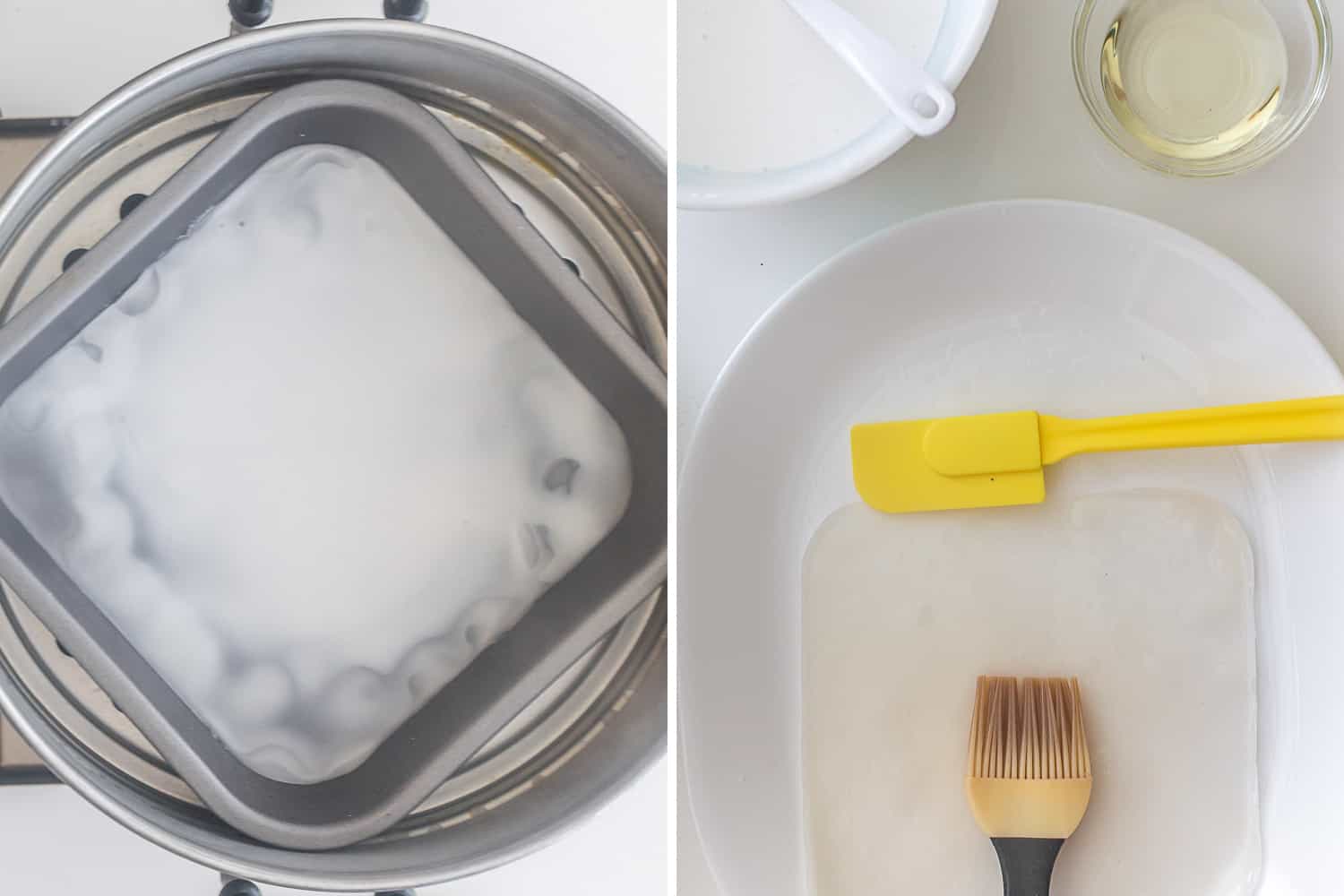
Left: not entirely cooked rice noodle sheet. Right: noodle sheet coated with plenty of vegetable oil
My steamer is a 26 centimetre (10.5 inch) Crocodile brand aluminum tiered steamer. I use an 8 inch shallow cake pan. If your steamer and/or pan are smaller, adjust the amount of batter used for each sheet. The recipe, as is, will provide you with 8 rice noodle sheets.
I'm no videographer, but below is a simple video demonstrating how to steam the noodles.
Homemade Rice Noodles (Sen Yai)
The quantity of rice flour to tapioca starch can be played around with depending on how chewy you want the noodles to be. This recipe is designed to be used for fried noodle dishes such as pat see ew and noodle soups, such as yentafo.
- 120 grams (1 cup) rice flour
- 75 grams (½ cup + 2 tablespoons) tapioca starch
- 350 grams – same as millilitres (1 ½ cups) water
- 2-3 tablespoons vegetable oil, for oiling pan and brushing noodles
- 8 inch pan
- 26cm or larger Chinese steamer
- Large, oiled dinner plate
- Mix the flours in a bowl and add the water. Stir or whisk vigorously, ensuring there are no pockets of flour (mixing with your hand will help to ensure this). Leave to rest for 30-45 minutes.
- Heat your steamer to a slow simmer. Wipe the pan with some oil, ensuring none pools (you only want a thin coating). Place the pan into the steamer. Whisk the rice flour slurry and add ¼ cup (60 ml) of the batter to the pan. Tilt until the liquid covers the entire bottom evenly. Wipe the lid of the steamer and place it back on.
- Steam for one minute. Remove the pan, using a tea towel or gloves to avoid steam burns, and brush the top of the sheet with a liberal amount of vegetable oil. Use a rubber spatula or offset icing spatula to pull the noodle away from the side of the pan, and then grab each side with your fingers to pull it out. Lay it flat on an oiled plate.
- Oil the pan again and repeat the process, stacking each successive sheet on top of the last, until all of the noodle sheets are cooked. Be sure to wipe the lid of the steamer every time you remove and replace it. Also whisk the batter before every new sheet is poured.
- Once all of the noodle sheets have been cooked, cut them into 1 inch slices and store in a sealed container or ziploc bag. Use the same day (or next at the very latest, if you want to risk it). These do not refrigerate well, so are best kept at room temperature.
- Author: Kip Dorrell
- Makes: 500 grams (1.1 pounds), or 8 8-inch sheets
- Cuisine: Chinese/Thai


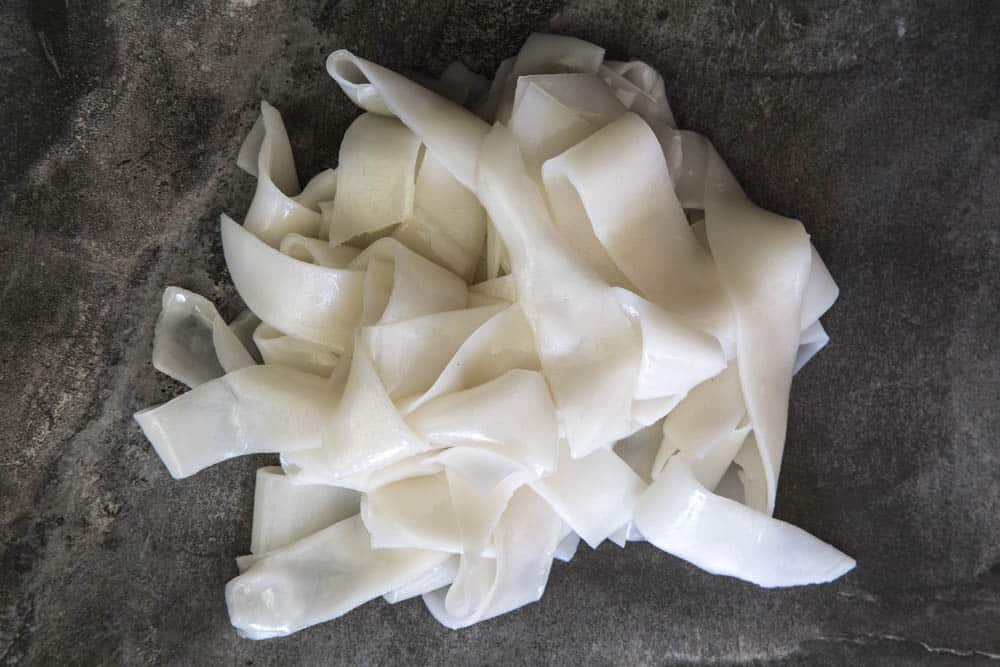

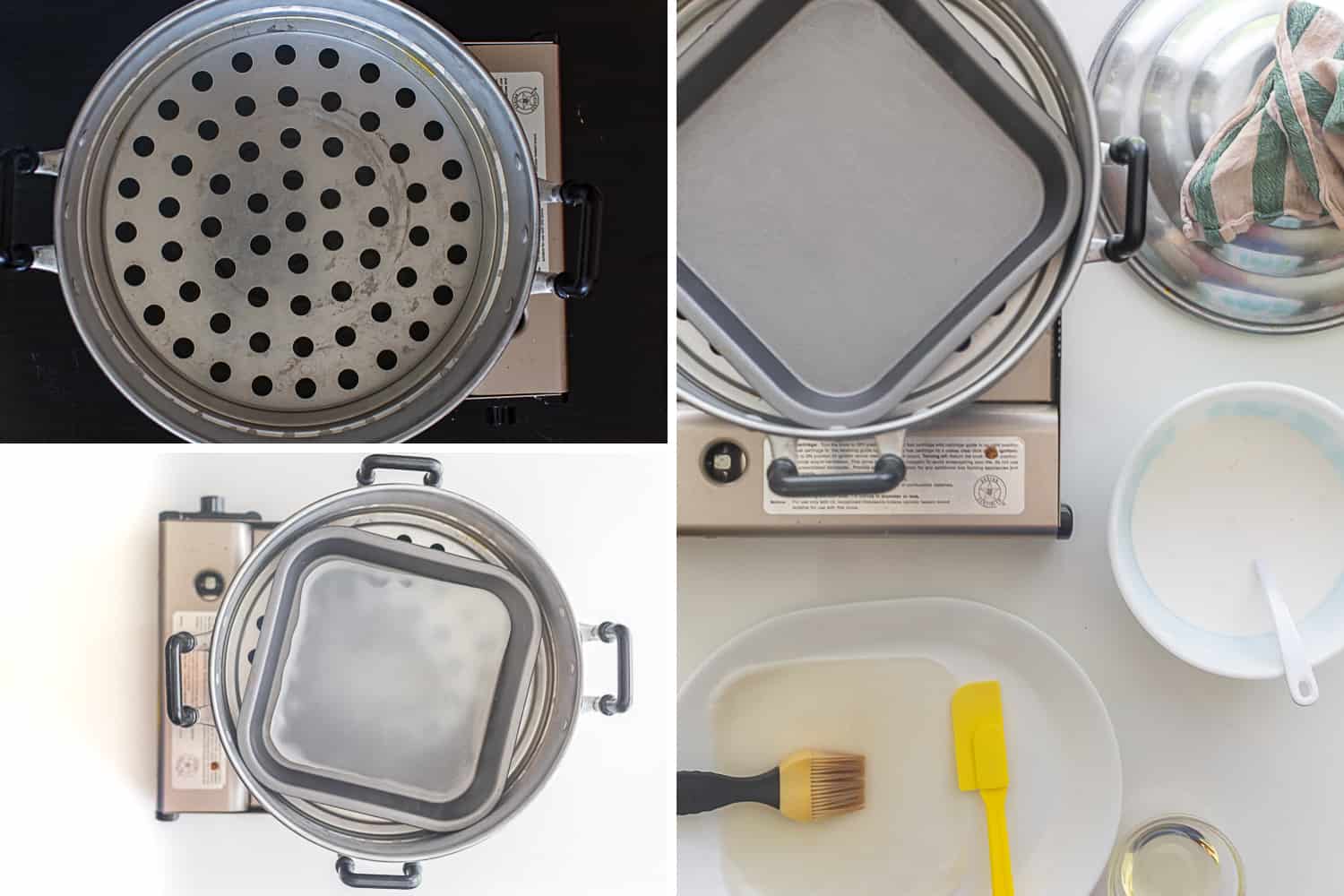
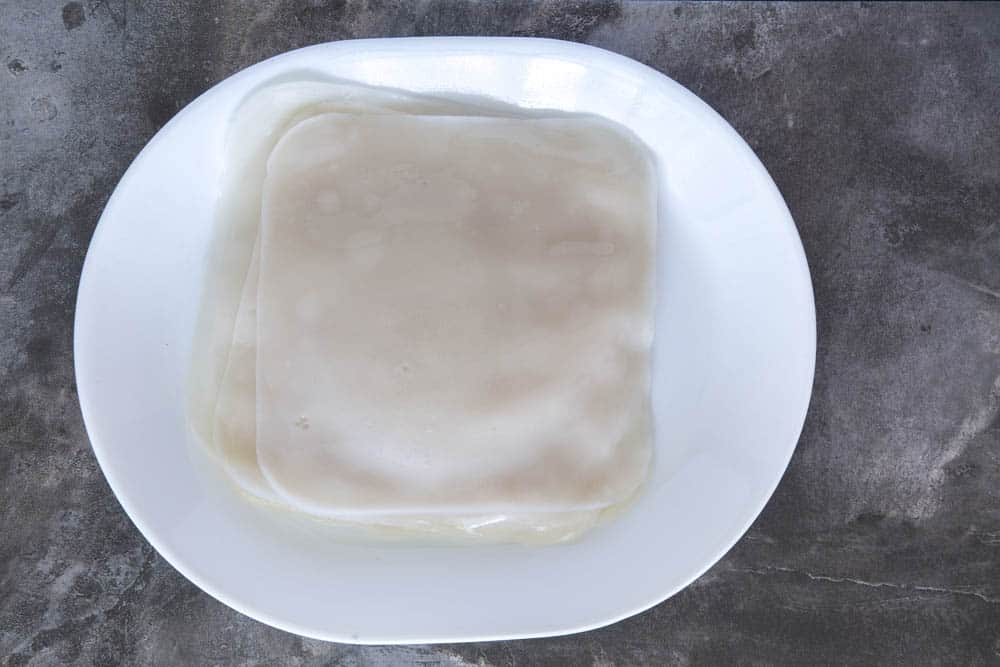
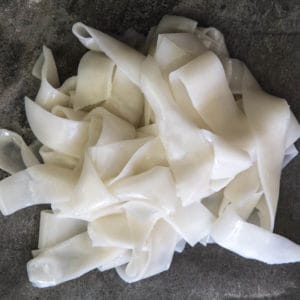
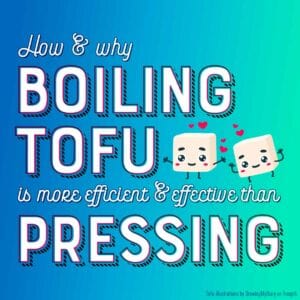

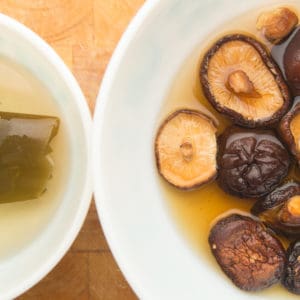
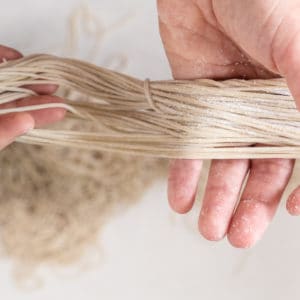
Caitlinc
Wow, these sound so good! I'd never even though of making my own rice noodles but considering how amazing fresh pasta is (I basically can't eat ravioli that's not homemade anymore) I can imagine how great this must be!
Kip
Oh! You just reminded me to use my new pasta machine to make ravioli with the Mozzarisella blue cheese I finally found. Cheers!
Mary Flemister
Thank you for providing detailed explanations of tips on making rice noodles. I been trying to make them few times. And I'm close but not silly enough. Do you know what makes them more silkier? I appreciate if you can help me.
Mary
Kip
Hi Mary,
Apologies for not seeing your comment sooner. You're welcome for the recipe, and to answer your question it's the tapioca starch that gives them a silkier texture...
Ben M
I am gonna have to try this... as a side note, is rice flower just pulverized rice? I wonder if I could just make this from the rice I already have
Kip
Hi Ben, I'm sorry I didn't see your comment until now! To answer your question rice flour isn't just pulverised rice, which is too grainy for this recipe; the flour needs to be very fine. If you check out an Asian grocer you should be able to find some.
Michael
The rice used to make rice flour is two year old aged rice so it has had time to naturally dry out more. It’s then ground and reground using a stone grinder with water to get it right.
Djea3
IT can be done very easily. That is how it is done in Asia.. Basically you soak the rice 24 hours..then you use a blender to masticate it as complete as possible. then add the starch and water back tot he proper constistancy. Hope this helps.
Kip
Great tip! Thank you. And of course that makes total sense once spelled out...
Ethan
When you soak the rice are you soaking it in the recommended amount of water for cooking or soaking with additional water and if so how much more water?? Thx 😊
Anoneater
Traditionally, for home use, out of cities and a few generations back, soaked rice is put a small amount at a time through a top hole into a home stone mill (a hefty thing about 40 cm diameter, with a thick base, shallowly grooved, and a hefty moving piece above that's turned steadily in the horizontal plane with an upright short wooden handle). **No waste of manufactured electricity.
Wonderful thick white liquid slowly flows out, channelled into a container.
You can do that with sticky/glutinous rice too.
Steaming and layering is helped often by using large clean banana leaves. No need or not much need for oil. They're NON_STICK.
Some people told about, in some areas, frying Thai-style omelette ON banana leaves, no oil.
Fine recipes often call for a mix of different types of flour or layers thereof.
BTW fine cooks didn't measure -they were at one with the ingredients' conditions and judging by consistency/feel etc.
Lastly, before plastic, Rard-Na (with kind-of gravy) and Pad-see-ew (-d, not -t because the original spelling is a -d, unvoiced) were served, when take-away, on banana leaves ..... which gave the food very wonderful fragrance. Also for sweets. Nowadays nostalgic people seek out trendy restaurants that serve such foods on banana leaves placed on plates.
Hope this helps with exploring ways 🙂
Kip
Thank you for your detailed explanation. With regards to spelling, standard transliteration is pat, but it is so commonly spelled pad that I go back and forth between the two. I didn't know the original spelled had an unvoiced -d though. Still, language is fluid and changes, the -t being the most common pronunciation I hear today.
Anoneater
Hi, You've got a few things mixed up. Hope you don't mind some edits....
"Sen Yai" in Thai is 'Ho Fun' in Chinese.
'sen' means 'strand', Yai' means 'large', whereas 'lek' means 'small'
When people say 'sen yai', it's a short-hand; they leave out the 'Gwuay Tdeo' in front , which means 'noodles'.
So, in fact, you have "(Gwuay Tdeo) sen yai", "(Gwau Tdeo) sen lek".
There's also "(Gwuay Tdeo) sen mee", where 'mee' indicates thin round tiny strands.Some people do not count 'mee' as 'Gwuay tdeo' and some shorten things even further as just 'mee'.
'Pad' means 'stir fry' or 'stir fried'. (Gwuay Tdeo) Pad Thai is a specific dish that only uses 'sen lek', traditionally NEVER 'sen yai' or anything else. This 'sen lek' is they chewy one, senyai is soft soft soft..
'Yentafo', locally no one knows what language that was from, is a specific style of noodle soup that has tomato paste + salted beancurd + squid + fried tofu etc; this can have any type of the noodle strands.
Then there 'Ba Mee' that's egg noodles and 'Woon sen' that's transparent. And etc etc...
BTW, all noodles were adopted from Chinese foods only since about WW2 ---more like many worldwide adopted pizza. Noodles are NOT originally Thai.
Also, apparently via Marco Polo the Italians first tried to make spaghetti and ravioli to imitate the Chinese noodles and wontons..But with only wheat available they could not and have not been able to (or not want to) produce soft noodles like from rice flour.
Hope this clarifies for everyone. Please explain to others, so many mistranslations in recipes etc, not many locals see or could/would correct the misunderstanding written in other languages.
Kip
Hi Anoneater,
I know that sen yai and ho fun are the same, but I can see how my language may have indicated otherwise. So I will change that. Thank you for the suggestion. With regards to pat thai, I have not indicated that sen yai noodles are used. And yes, I find the history of noodles fascinating too, although none of the evidence is absolutely conclusive. Historians are still arguing over whether noodles, at least in their current extruded form, originated in Europe, the Middle East, or the far East. Regardless, I am grateful for their existence!
Yentafo is one of my favourite noodle dishes. The tofu in the paste (dau hu yee) is more than salted – it is fermented over months with an inoculated red yeast rice, hence the colour. Some people also use beetroot in the pink yentafo paste (as an alternative to the pink dye that is often added).
Readers who are looking at the comments may want to also check out my post on how to order vegan noodles in Thailand for further explanations of some commonly used noodles.
Carmen
Hi, curious to know if one can roll out the rice flower mixture after resting,and cut strips for rice noodles then just drop them in water(boiling?),like other pastas? Also can you add gelatin to make the noodles bond,I don't understand why they have to be steamed in sheets if you just want to eat them asap. Thanks for your patience 😊
Kip
Hi Carmen,
The dough can't be rolled because it's liquid, so it is poured into the trays for steaming to firm them up. This is how hor fun rice noodles are made. I can't confidently give any advice about making rolled rice noodles, but I'm sure recipes exist in the gluten free world for Italian style pastas. I don't consume nor use gelatin as I am vegan, but I have never heard of it being used in any type of noodle. Hope I've answered your questions! Making rice noodles is time-consuming but you can always buy them freshly made from an Asian market too 🙂
Jeremy Clayre
I'm seeiously happy to have found your website. Congratulations and thank you!
Kip
Thank you 🙂
Mem
Thank u for this wonderful recipe and video. You are awesome no matter how you spell it. Lol.
Kip
Thanks you <3
JDK
Thank you for this article and recipe. 2 questions--
What would be the percentage of tapioca starch to rice flour to give the chewiest noodles and after steaming, how would they be cooked to bring the chewy attribute out to use for cold noodle dishes and soups?
Since we can now buy wheat starch and wheat gluten separately, might this same formula with tapioca starch work for wheat starch to make and steam Xi'an Liang Pi cold noodles instead of having to wash out the starch from a kneaded wheat dough?
Thanks!
Kip
Hi JDK,
As for the ratio, a 2:1 ratio of rice to tapioca starch works fine. I like a little bit of extra tapioca starch because it imparts more chew than the rice flour. The ratio isn't fixed. It all depends on the texture you are trying to achieve. More rice flour will make for a firmer noodle.
After steaming, the noodles are cooked, so you would use them as is in preparation of your noodle dishes and soups.
Good question about the liang pi noodles. I've not yet made them but theoretically your idea should work! If you try it, please report back to let me know how it goes?
Chocoviv
Love rice noodles
Don
hi!
Can I use glutinous rice flour and leave out tapioca starch? Incorrectly bought two packs of it instead for rice four 🙁
Kip
Hi Don,
I think yes, but I can't guarantee results! There are a lot of variations on the starches people use for these noodles. If you give it a try please let me know how it works!
Barb
Can you use a bamboo steamer to steam the noodles?
Kip
Yup!
Laura
I've made these before, but I struggle with how to cook them. I tried a pad Thai, and the noodles broke apart and the whole thing got super gummy. The noodles alone were good, and at first it was OK, but after 5 minutes on low heat basically combining them with my sauce and meat, they self destructed. Help!
Kip
Hi Laura,
This type of noodle isn't used for pad thai, so it's nothing you're doing wrong that makes it not work. I recommend you try a dish like pad see ew or drunken noodles instead. Or there's always noodle soup!
modifiedcontent
I have the same breaking apart/self-destructing problem with Pad See Ew; after 1-3 minutes combining with the other ingredients the noodles just disintegrate. Is there any trick to making homemade rice noodles stronger? Is the resting phase key? The ratio of rice flour and tapioca? Something else?
Kip
How are you cooking them? Specifically, are you agitating them a lot in the pan? The active stir frying time for pad see ew is seconds just to mix the sauce through. Then leave for a minute on high heat to char on one side. Flip and leave for a minute to char on the other side. I have a recipe that explains this process here. My guess would be what is making the noodles soggy is a combination of two factors: too much agitation and overcrowding the wok. Try making only one serving, or a maximum of two servings, at a time. Any more than that and you will likely end up with mush.
modifiedcontent
Thanks for your response. The noodles disintegrate before I'd ever get to 'a minute on high heat to char'.
Deeya
Hi. So i bought Jasmine rice flour. Do you think its ok ?
Kip
Yup, that should be perfect
Noel
Hi Kip,
How would I adjust the recipe or cooking if I wanted the noodles twice as thick for a nice chewy noodle that doesnt fall apart? I also have arrowroot flour in addition to tapioca flour if you think that would help.
Thanks for any/all advice!
Kip
Hi Nick,
For a thicker noodle I would just add more batter when steaming, but keep in mind this may necessitate a longer cooking time as well. Having said that, if noodles are falling apart during cooking then the chances are they are overcooked and/or have been agitated too much... With regards to arrowroot versus tapioca starch, the latter retains sturdiness better under prolonged heat so is preferable.
Matt
Could I use Arrowroot Starch/Flour instead of Tapioca Starch?
Kip
Hi Matt, I would avoid arrowroot starch in anything with lasting heat as it breaks down more quickly.
kai etringer
Hi. I could use some help.
I tried this recipe and it did not work. The sheets did not have the strength to hold themselves together, I even tried cooling it with water in the pan first.
I also saved some discards for afterwards to taste, and they tasted somewhat gritty/course. I followed the recipe as closely as possible. The only variance I made was using sweet rice flour instead of plane rice flour. Could that have been it?
Kip
Hiya Kai,
You are correct in your own diagnosis of the issue. Sweet rice flour aka sticky or glutinous rice flour is a different product altogether.
Ashley Bailey
Can these be dried?
Kip
Hi Ashley,
I don't see why not, but I've never tried before so I can't say for sure.
I reserve the right to improve malicious and trollish comments.